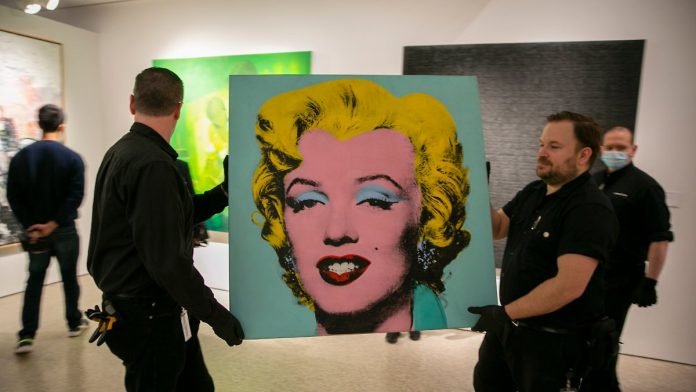At $195m, Warhol’s Shot Sage Blue Marilyn is the second most expensive artwork ever sold at auction. This puts Andy firmly in the pantheon of the greatest artists of all time, surpassing all contemporary, modern, impressionist, and classical artists except Leonardo da Vinci, whose Salvator Mundi (a much reworked painting, supposedly but not certainly by the master) sold for the staggering sum of $450m.
Michelangelo, Rembrandt, Vermeer, Monet, Rodin, Van Gogh, DuChamp, Picasso, and the rest - stand aside!
With this auction sale Warhol’s status has surpassed even the fawning adoration of the Netflix documentary (The Andy Warhol Diaries) that labeled him “the most important artist of the 20th century”. Andy’s most important works? The Marilyn portraits and his Campbell’s Soup cans, mass produced in studio he called “The Factory”.
The soup cans propelled Warhol to fame by provoking outrage among critics. Yet this had been done 45 years earlier by Marcel DuChamp’s Fountain, a urinal lying on its back.
Fountain was a political statement aimed squarely at the Society of Independent Artists, of which DuChamp was a member. It is the most notable example of the avant-garde Dada movement that rejected the ideals of capitalism and bourgeois aesthetics in reaction to the horrors of WWI.
Warhol’s soup cans are by comparison completely empty. There is no political statement, no criticism, no humor. They don’t even hold soup.
“The Soup Can effect was not to rescue American banalities from banality but to give banality itself value.” - Gary Indiana
The Marilyn portraits, like the soup cans and everything else, were produced ad nauseum in huge editions by subcontractors.
“most of his works from around 1970 onwards were made in off-site studios that he never visited. He simply sent templates for the paintings and prints to be made from, and signed the finished works when they were sent to him.” - Jonathon Jones, The Guardian
This is now the definition of high art - but only if money is the gauge. If you are looking for meaning in Warhol’s work you will only find economics: a combination of public relations, celebrity culture, and mass production. The Warhol estate had a collection of some 100,000 pieces.
Warhol was the adored enfant terrible of the elite, rubbing shoulders with and making Marilyn-style portraits, often commissioned, of musicians, actors, socialites, sports figures - anyone and everyone notable in one sense or another. In this way he became - in more ways than one - a celebrity artist.
“[Warhol] is the last of the truly successful social portraitists, climbing from face to face in a silent delirium of snobbery, a man so interested in elites that he has his own society magazine.” - Robert Hughes
This was a marketing campaign tuned to perfection, based on education in commercial art and experience in advertising and promotion.
“Good business is the best art.” - Andy Warhol
Which brings us back to the fundamental question that is the basis of my work: If art is business, is it still art?



